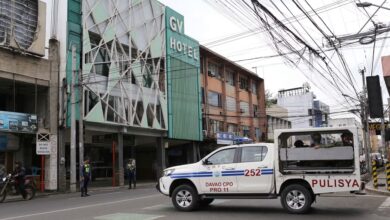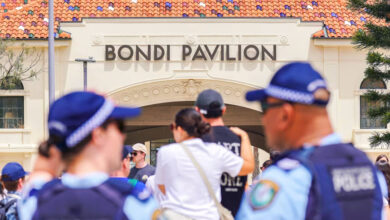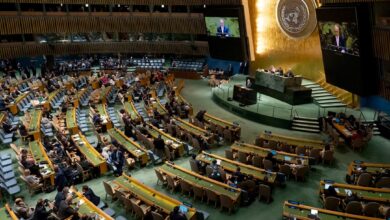
Victims of Australia’s catastrophic bushfires are still living in tents, garages and makeshift shelters months after the blazes ended, with efforts to rebuild their lives hampered by the coronavirus pandemic.
Inside a small tin shed on Australia’s south-east coast, a family of six takes refuge from the cold as the southern hemisphere winter begins to bite.
The structure — chock-full of toys and beds — has been home to 51-year-old Anita Lawrence and five of her children since February.
She had been in Tasmania when fires ripped through the area, torching materials ready to build a new home and new life for her family.
“Every single little thing disappeared,” she told AFP near trees still blackened from the blazes.
Australia’s unprecedented bushfire crisis that scorched an area larger than most nations and displaced thousands put a rare spotlight on climate change in a rich, developed country.
The disaster sparked charity telethons, government promises of a quick recovery and donations from across the world.
But six months on and just six hours drive from hyper-affluent Sydney, scores of people like Lawrence are still living in limbo.
“When you come back, and there’s so much destruction, everything is difficult,” she said.
Before the crisis Lawrence had got by working a few days a week at the local school, teaching the kids gardening.
During the months-long lockdown she survived on pension savings and struggled to homeschool her own children using a single computer connected to a mobile-phone hotspot.
Now schools are going back and some help has arrived, in the form of local man David Crooke and his crew who have put together an extension for their dwelling.
It is temporary, but Lawrence now has a bathroom, heating and a bedroom until she can find a way to build a permanent home.
“Just to see a young boy see running water even, and a shower for the first time, that’s a big thing,” said Crooke.
His small team — partially funded by the New South Wales government, Australian Red Cross and donations — has been building shelters for those who would otherwise be destitute for months.
“There’s places that are completely wiped out — our next job we go to, the ladies have a little tent in a shipping container right now,” Crooke said.
He himself lost his home to the fires last year and spent the summer battling blazes.
Armed with four homemade water pumps, his team saved several homes as fires repeatedly hit the southern coast of New South Wales.
Since then he has been camping out in increasingly harsh conditions — moving from property to property, and helping build shelters.
But with ageing equipment and a struggle to find materials, the physical and emotional toll was “flogging” the team, he said.
“None of my crew have got really anything, you know, we’re week-to-week sort of guys, you rely on that pay cheque big time.”
– The world moved on –
Throughout the area, signs of life are springing from the charred-out landscape, but 66-year-old Wayne Keft said the recovery has been “slow and difficult” for many.
His home near Cobargo was destroyed when “a fireball went through the front of the house”.
He now lives in a garage, and is plagued by dust that blows in off a road nearby.
A surveyor’s stake for work on his new home sits in a barrel nearby, useless until the ruins of the old structure are cleared by crews who have been operating for months on similar jobs in the area.
Help has slowed since global attention shifted from bushfires to the pandemic.
Mathew Hatcher said his warehouse in nearby Batemans Bay was once full of donated goods.
“We were churning along, a very well-oiled machine, then COVID hit, and it kind of stopped the donations,” said Hatcher, coordinator of South Coast Donations Logistics Team.
The virus had also meant many larger organizations had to pull out volunteers, leaving locals struggling through trauma without appropriate mental health support, he said.
With tourism effectively banned in the state until at least June 1, the area’s primary source of income and path to recovery has also been cut off.
Without a wage, it is almost impossible for local businesses to get a loan that would finance rebuilding.
“This area is going to struggle financially for the long term,” Hatcher said.
After the fires, Lorena Granados and her husband set up an ad-hoc market stall in front of the ashes of their shop, “Roman Leather Goods and Repairs”.
They have since moved to a temporary building, hoping the business can help them get back on their feet.
“We really weren’t prepared to lose our home and business in one day,” she said.
The virus has slowed their trade to a trickle, but they are determined to fight on.
“It encourages us to keep going every day when we sell just one little item,” she said.
Image; AFP / Saeed KHAN Wayne Keft, whose home was destroyed by the fires, says recovery has been ‘slow and difficult’ for many




